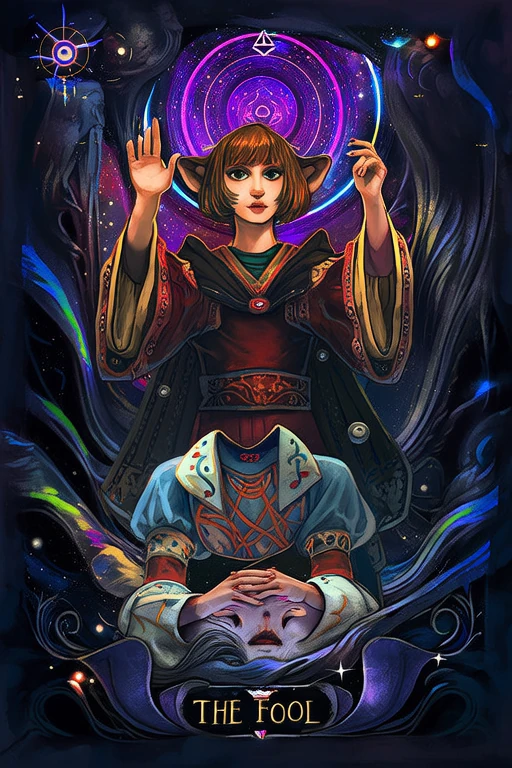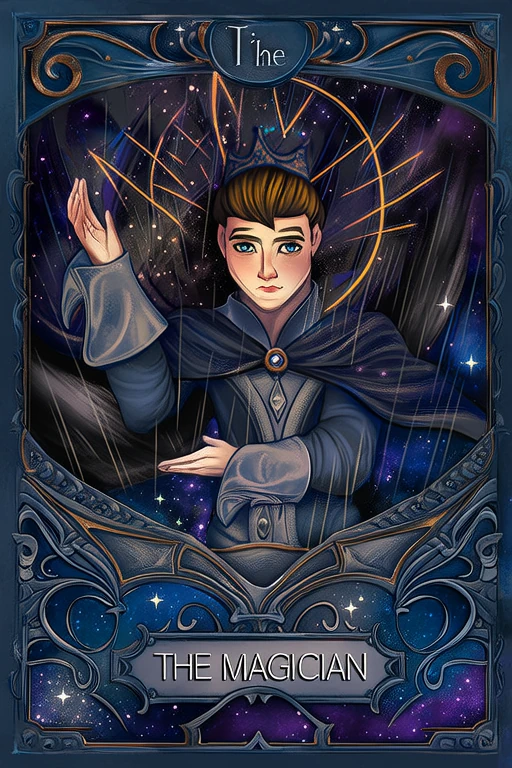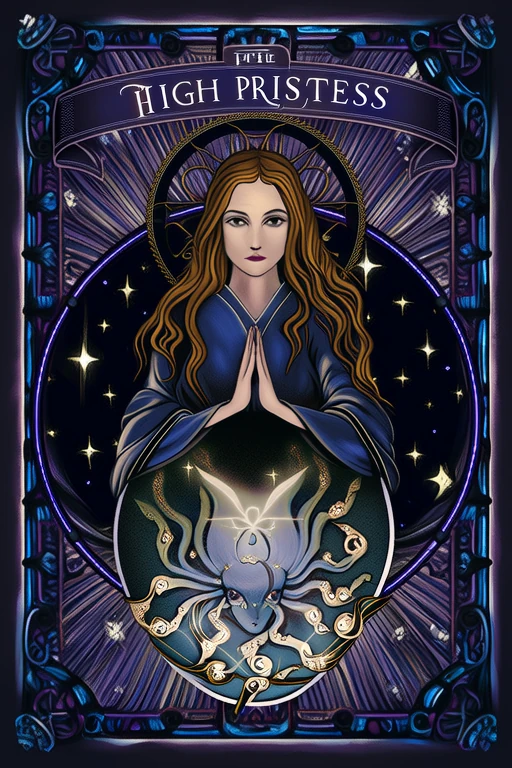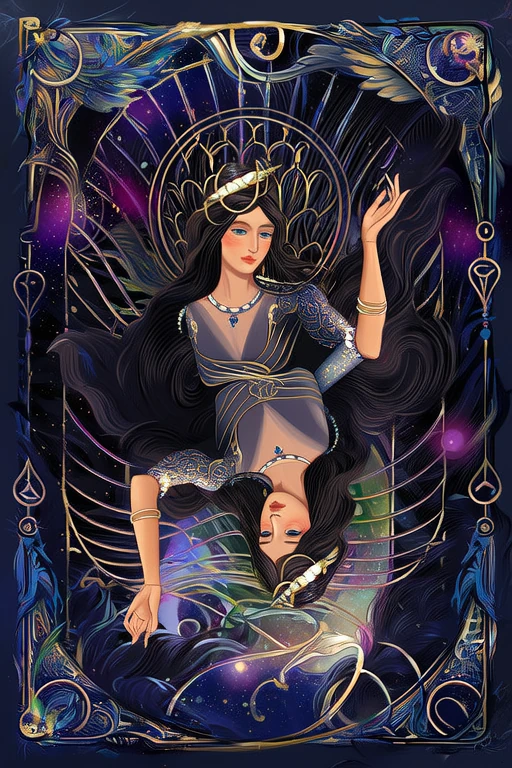
Strength
Discover the deep meaning of Strength with our free AI-powered tarot interpretation. Get instant, accurate readings based on advanced tarot knowledge.
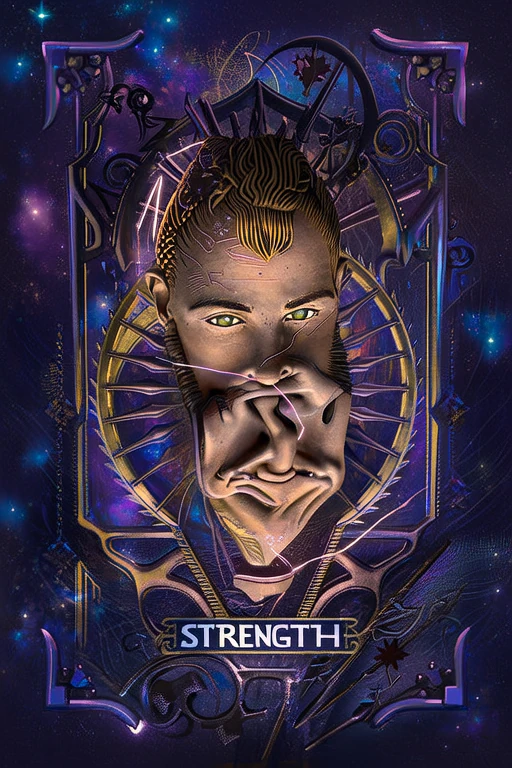
Keywords
Upright Meaning
Inner strength, courage, persuasion, influence, compassion
Reversed Meaning
Self-doubt, low energy, raw emotion
Full Interpretation
Strength represents inner courage, compassion, and the power of gentle persuasion.
In-Depth Analysis
📜 Historical Background
The tarot card 'Strength' (力量) is the eighth card in the Major Arcana of most traditional tarot decks, symbolizing inner courage, patience, and mastery over one's emotions. Its historical roots trace back to early 15th-century Europe, particularly in Italy and France, where tarot was originally used for playing games before evolving into a tool for divination and spiritual insight. The earliest known depiction of the Strength card appears in the Visconti-Sforza tarot deck, created around the 15th century, where it was often illustrated as a woman gently closing the mouth of a lion. This imagery conveyed a theme of taming brute force through inner strength and compassion rather than aggression.
Throughout history, the Strength card has been associated with various mythological and religious figures. In some interpretations, it has been linked to the biblical story of Samson and the lion, symbolizing divine strength and control. Others connect it to the Greek goddess of virtue, Arete, or the Roman goddess of power, Victoria. In alchemical symbolism, the card represents the union of opposites—spirit and matter, reason and passion—reflecting the transformative journey of the soul.
As tarot evolved during the 18th and 19th centuries, particularly under the influence of the Hermetic Order of the Golden Dawn and the Rider-Waite-Smith deck (1909), the imagery of Strength underwent significant changes. In the Rider-Waite-Smith version, the card features a calm woman gently holding the lion’s jaws open, symbolizing the power of compassion, patience, and spiritual control over primal instincts. This image became the standard for many modern decks, although interpretations vary widely across different artistic styles and cultural perspectives.
In Eastern traditions, particularly in Chinese and Japanese metaphysical systems, the concept of strength is often associated with balance, harmony, and inner discipline—echoing the themes found in the Western tarot. The card also finds resonance in Eastern philosophies like Taoism and Buddhism, where inner strength is seen as a path to enlightenment and self-mastery.
Culturally, the Strength card has been interpreted in diverse ways. In some Latin American tarot traditions, it is associated with resilience and perseverance in the face of adversity. In modern feminist tarot readings, it often represents the power of softness, nurturing, and emotional intelligence. Across time and cultures, Strength remains a powerful symbol of human potential and the triumph of spirit over fear, anger, and doubt.
Symbolism & Imagery
The Strength card is rich in symbolic meaning, with each element of its imagery contributing to a deeper understanding of its spiritual and psychological significance. The central image of a woman gently holding a lion’s jaws open is the most iconic representation, found in the Rider-Waite-Smith deck and many modern variations. The woman, often depicted in flowing robes or a white gown, symbolizes purity, inner peace, and spiritual awareness. Her calm demeanor and gentle touch reflect the idea that true strength lies not in physical force, but in compassion, patience, and emotional control.
The lion, a powerful and primal creature, represents the untamed forces within us—passions, desires, fears, and instincts. The woman’s ability to subdue the lion without violence illustrates the mastery of the self, the ability to channel raw energy into constructive power. This dynamic between the woman and the lion is a metaphor for the reconciliation of opposites: reason and emotion, spirit and matter, control and surrender.
Colors play a significant role in the symbolism of the Strength card. Red, often used for the lion or the woman’s attire, represents passion, energy, and vitality. White symbolizes purity, clarity, and spiritual awareness. Gold, if present, denotes divine wisdom and the illumination of the soul. These color choices reinforce the card’s message of balance and inner harmony.
Numerologically, the number 8 is associated with Strength, as it is the eighth card in the Major Arcana. The number 8 signifies infinity, balance, and karmic justice. It reflects the cyclical nature of strength—rising and falling, gaining and losing, but always returning to equilibrium.
Across cultures, interpretations of the Strength card vary. In some decks, the woman is replaced by a male figure, emphasizing physical strength or martial prowess. In others, the lion is depicted as docile or even smiling, suggesting a more harmonious relationship between the human and animal aspects of the self. In modern feminist tarot, the card is often celebrated for its portrayal of feminine strength and emotional intelligence.
When upright, the Strength card signifies courage, resilience, and the ability to overcome challenges through inner conviction. It encourages the querent to trust in their inner power and to approach difficulties with grace and composure. Reversed, the card may indicate self-doubt, lack of control, or the misuse of power. It can also suggest repressed emotions or a failure to confront one’s fears.
In the context of the entire tarot deck, Strength is often associated with The Chariot and The Hermit. While The Chariot represents external control and determination, Strength emphasizes internal mastery and emotional wisdom. The Hermit, in turn, complements Strength by offering introspection and spiritual guidance. Together, these cards form a triad of personal empowerment and self-realization.
Psychological Insights
From a psychological perspective, the Strength card resonates deeply with Carl Jung’s concept of the archetypes and the process of individuation—the integration of the conscious and unconscious self. In Jungian terms, the woman and the lion on the Strength card can be seen as representations of the anima and the shadow. The woman symbolizes the conscious, rational, and nurturing aspects of the psyche, while the lion embodies the shadow—the primal, instinctual, and sometimes feared parts of the self. True strength, therefore, involves embracing and integrating these shadow elements rather than suppressing or denying them.
In modern life, the Strength card serves as a reminder of the importance of emotional resilience, self-compassion, and inner courage. It encourages individuals to face life’s challenges with integrity and grace, relying not on aggression or force, but on patience, understanding, and wisdom. In decision-making, Strength advises a balanced approach—weighing both logic and intuition, and trusting one’s inner voice even in the face of adversity.
For personal growth and self-awareness, the Strength card is a powerful guide. It calls on individuals to confront their fears, acknowledge their vulnerabilities, and develop the inner fortitude to move forward with confidence. This card often appears during times of personal transformation, urging the querent to trust in their ability to heal, grow, and evolve.
In therapeutic and counseling settings, the Strength card can be a valuable tool for exploring issues related to self-esteem, emotional regulation, and trauma recovery. Counselors and therapists may use the card to encourage clients to find strength within, to embrace their inner power, and to approach healing with patience and compassion. It is especially relevant for those dealing with anxiety, fear, or feelings of powerlessness.
Within modern spiritual practices, Strength is often linked to mindfulness, meditation, and energy work. It is a card of inner alchemy—transforming fear into courage, doubt into faith, and weakness into resilience. Many spiritual seekers use the Strength card in visualization exercises, affirmations, and rituals aimed at cultivating self-mastery and spiritual empowerment. Whether through tarot journaling, guided meditation, or intuitive readings, the Strength card continues to offer profound insights into the journey of self-discovery and soul evolution.
Correspondences
The Strength card is deeply connected to astrological, elemental, and energetic correspondences that enhance its spiritual and metaphysical significance. Astrologically, Strength is associated with the zodiac sign Leo (July 23 – August 22), ruled by the Sun. This connection reinforces the card’s themes of courage, self-expression, and radiant inner power. The Sun’s influence brings warmth, vitality, and confidence, aligning with the card’s emphasis on inner strength and self-mastery.
In terms of planetary correspondences, the Sun is the primary celestial body linked to Strength, symbolizing illumination, life force, and creative power. The Sun’s energy supports the card’s message of overcoming inner obstacles through self-belief and clarity of purpose.
Gemstones and crystals associated with the Strength card include Carnelian, which boosts courage and motivation; Tiger’s Eye, which enhances confidence and protection; and Rose Quartz, which promotes compassion and emotional healing. These stones can be used in meditation, carried for support, or placed on an altar to amplify the card’s energy.
Herbs and essential oils that resonate with Strength include Frankincense, known for spiritual clarity and grounding; Sandalwood, which aids in inner peace and meditation; and Lavender, which supports emotional balance and stress relief. These can be used in aromatherapy, incense, or herbal sachets during tarot readings or personal rituals.
Elementally, Strength is connected to Fire, representing passion, transformation, and willpower. This aligns with the card’s themes of inner fire, determination, and the ability to harness emotional energy constructively. The season most associated with Strength is Summer, a time of peak vitality and outward expression.
In energy work, the Strength card corresponds to the Heart Chakra (Anahata) and Solar Plexus Chakra (Manipura). The Heart Chakra supports compassion, love, and emotional resilience, while the Solar Plexus Chakra enhances personal power, confidence, and will.
Numerologically, the number 8 is linked to Strength, symbolizing balance, infinity, and karmic justice. This reinforces the idea that true strength is not about domination, but about maintaining harmony and integrity in the face of challenges.
❓ Frequently Asked Questions
The Strength card is one of the most powerful and often misunderstood cards in the tarot deck. Here are some frequently asked questions and reading techniques to help both beginners and seasoned readers interpret it effectively:
**1. What does the Strength card mean in a love reading?** In love readings, Strength suggests a relationship built on mutual respect, emotional resilience, and deep inner connection. Upright, it indicates a strong bond where both partners support each other through challenges. Reversed, it may point to power struggles, emotional insecurity, or a lack of communication.
**2. Does Strength mean physical strength or emotional strength?** While the card can sometimes refer to physical endurance, it more commonly symbolizes emotional strength, self-control, and inner courage. It encourages the querent to approach challenges with patience and compassion rather than force.
**3. How is Strength different from The Chariot?** Strength emphasizes internal mastery, emotional intelligence, and calm control. The Chariot, on the other hand, represents external control, determination, and movement toward a goal. Both cards relate to power, but Strength is about inner resilience, while The Chariot is about outward direction and willpower.
**4. What does Strength reversed mean?** Reversed, Strength can indicate self-doubt, lack of confidence, or the misuse of power. It may also suggest emotional repression or a failure to confront fears. In readings, it often calls for the querent to reconnect with their inner strength and practice self-compassion.
**5. What are common misconceptions about Strength?** A common misconception is that Strength represents brute force or dominance. In reality, the card is about gentle control, patience, and emotional mastery. Another misconception is that it always brings positive news—while generally favorable, reversed it can highlight internal struggles.
**6. What spreads work well with Strength?** Strength is ideal for use in the three-card spread (past, present, future), the Celtic Cross, or the Hero’s Journey spread. It also works well in relationship and personal growth readings.
**7. How does Strength interact with other cards?** When paired with The Lovers, it suggests a deep emotional bond. With The Devil, it may indicate the need to break free from unhealthy attachments. With Justice, it reinforces the importance of fairness and integrity. With The Tower, it can indicate the need to find inner strength during sudden upheaval.
**8. What practical advice does Strength offer?** Strength encourages the querent to trust in their inner power, remain calm under pressure, and lead with compassion. It advises patience, self-awareness, and the ability to harness emotions constructively. In difficult situations, it reminds us that true strength lies in resilience, not force.
Practical Readings
Love Reading – Free • Online • AI • Instant • Accurate
In love, Strength upright: Inner strength, courage, persuasion, influence, compassion. Reversed: Self-doubt, low energy, raw emotion.
Career Reading – Free • Online • AI • Instant • Accurate
For career, Strength upright: Inner strength, courage, persuasion, influence, compassion. Reversed: Self-doubt, low energy, raw emotion.
Yes‑No Reading – Free • Online • AI • Instant • Accurate
As a quick yes‑no: upright tends toward “yes”, reversed leans “no”—interpret within your question’s context.
FAQ
What does Strength mean in tarot?
Strength represents inner strength, courage, persuasion, influence, compassion. This card encourages Strength represents inner courage, compassion, and the power of gentle persuasion.
What is Strength reversed meaning?
When Strength appears reversed, it signifies self-doubt, low energy, raw emotion. Consider areas that may require adjustment or release.
Is Strength a positive card?
Strength is generally considered a neutral to positive card, representing inner strength, courage, persuasion, influence, compassion.
What should I do if I draw Strength?
If you draw Strength, focus on inner strength, courage, persuasion. Align actions with the card’s upright energy.
How do I interpret Strength in a love reading?
In love readings, Strength suggests inner strength, courage, persuasion, influence, compassion in relationships. Consider how inner strength and courage apply to your situation.
What does Strength mean in a love reading?
In love, Strength points to inner strength, courage, persuasion, influence, compassion when upright and self-doubt, low energy, raw emotion reversed. Reflect on relational balance & authenticity.
How is Strength interpreted in career?
For career, Strength upright highlights inner strength, courage, persuasion, influence, compassion while reversed warns of self-doubt, low energy, raw emotion—adjust planning & execution.
What is the financial meaning of Strength?
Financially, Strength suggests inner strength, courage, persuasion, influence, compassion potential; reversed indicates self-doubt, low energy, raw emotion—use prudent pacing.
Is Strength a yes or no card?
Strength is generally a context-dependent when upright; reversed leans toward hesitation or NO—apply to the nuance of your question.
References
References
- Encyclopaedia Britannica – Tarot
Historical overview and cultural context of tarot cards.
- Wikipedia – Tarot
General reference on tarot history, structure, and usage.
- Biddy Tarot – Tarot Card Meanings
Widely cited interpretations and learning resources.
- Labyrinthos – Tarot Card Meanings
Educational articles on major and minor arcana.
